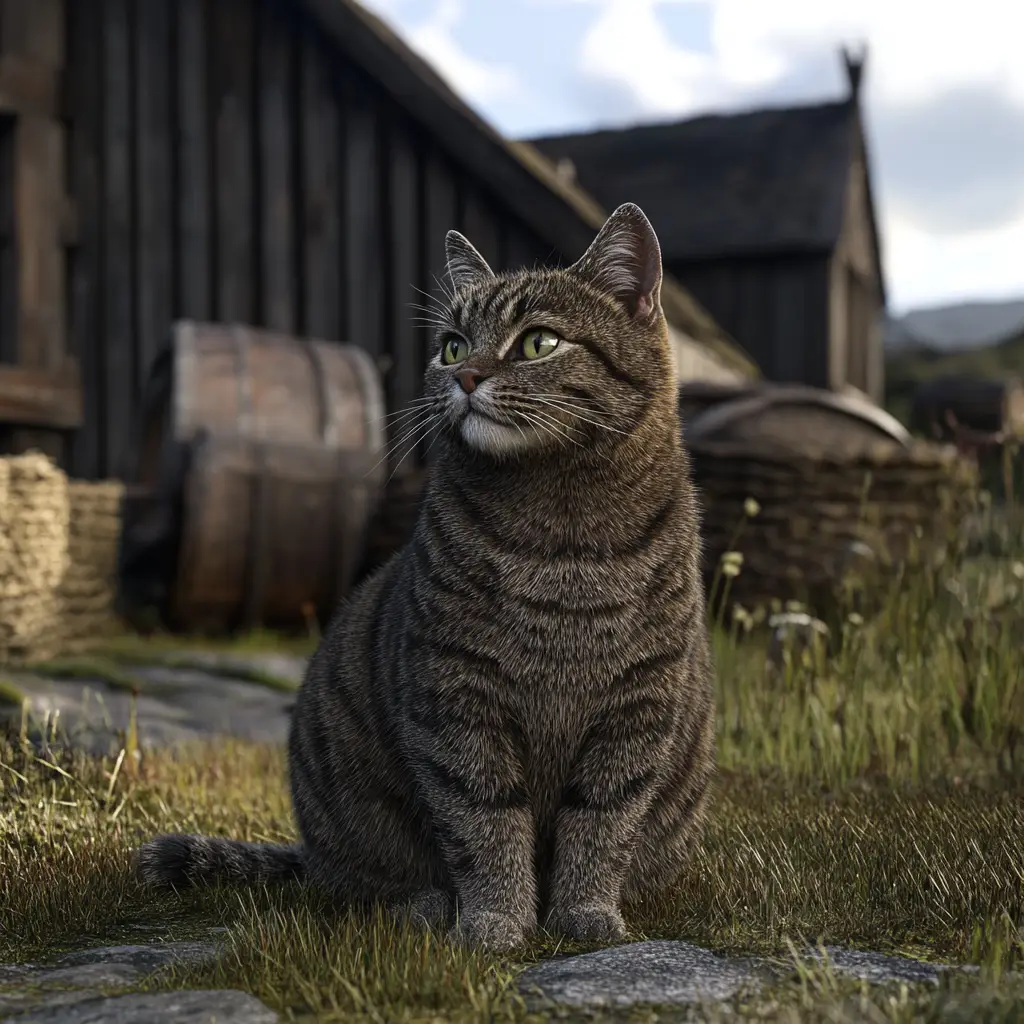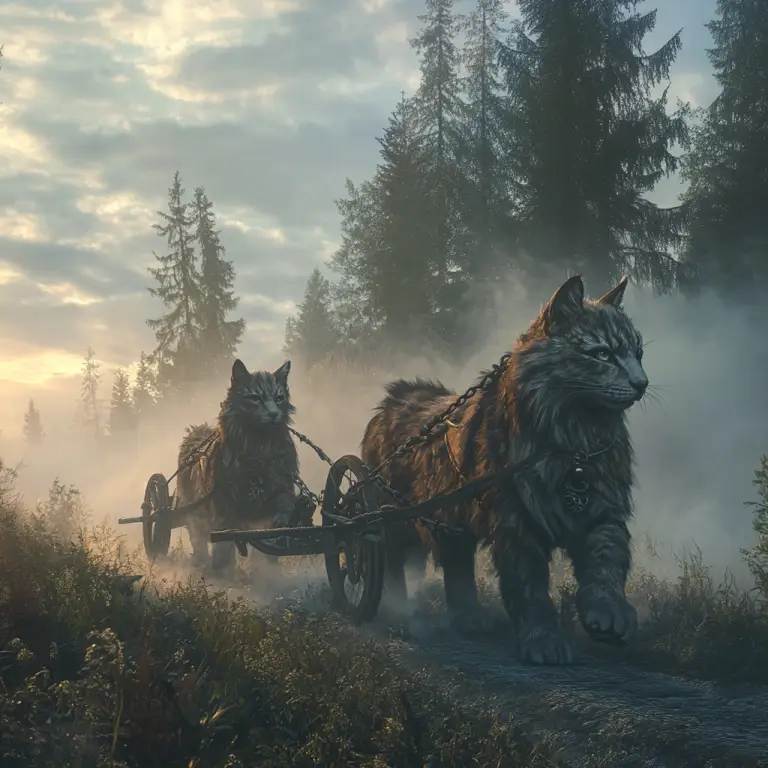Animals played a vital role in Viking society, both practically and spiritually. From everyday farming life to religious beliefs and mythology, animals were deeply intertwined with Viking culture. They provided food, labour, companionship, clothing materials, and sometimes even featured in rituals or symbolic representations.
Domestic Animals
Cattle
Cattle were highly valued in Viking communities. They provided milk, meat, leather, and bone for tools. Owning many cattle was often a sign of wealth. Cows were especially important for milk production, which could be turned into cheese, butter, and other dairy products.
Sheep and Goats
Sheep were kept mainly for their wool, which was used to make clothing and textiles. Wool was a crucial material in the cold Scandinavian climate. Sheep also provided meat and milk. Goats served a similar purpose, particularly valued for their milk and ability to graze in rougher terrain.
Pigs
Pigs were raised primarily for their meat. They were easy to feed and breed, making them a common animal on Viking farms. Pork was a staple food, especially in winter when preserved meats were essential for survival.
Horses
Horses were not only working animals but also held a high social status. They were used for transportation, farming, and in battle. In some Norse burial rituals, horses were sacrificed and buried with their owners, especially if the deceased was of high rank. The horse was considered a noble and almost sacred animal in Viking culture.
Dogs
Dogs were kept for herding, guarding property, and companionship. Some were trained for hunting as well. They were often mentioned in Norse sagas and poems, and like horses, dogs were sometimes buried with their owners.
Cats
Cats were commonly kept in Viking households to control pests such as mice and rats. They were also associated with the goddess Freyja, who was said to ride in a chariot pulled by cats. Because of this, cats may have been seen as having a mystical or protective quality.
Working Animals and Hunting
Vikings also relied on animals for hunting. Dogs were used to track game, while hawks and falcons were occasionally trained for falconry, especially among the wealthy. Birds of prey were highly respected and considered symbols of power and status.
Animals in Norse Mythology
Animals had a strong presence in Viking mythology and religious beliefs. Some of the most well-known examples include:
- Odin’s wolves, Geri and Freki, who were always by his side.
- Odin’s ravens, Huginn and Muninn, who flew across the world gathering knowledge for him.
- Thor’s goats, Tanngrisnir and Tanngnjóstr, who pulled his chariot and could be eaten and brought back to life.
- Fenrir, the monstrous wolf destined to bring about Ragnarök.
- Jörmungandr, the world serpent, a giant creature encircling the world.
These mythological animals were often powerful, dangerous, or wise, reflecting the respect and fear Vikings had for animals in general.
Symbolism and Ritual Use
Animals were sometimes used in rituals or sacrifices during important ceremonies, such as seasonal festivals, funerals, or times of crisis. The blood of animals, particularly cattle or horses, might be offered to the gods to seek favour or protection. Animal bones, teeth, or skins were also used as amulets or symbols of strength.
Animals were an essential part of Viking life. Whether working the land, providing food, or appearing in myth and ritual, they held both practical and symbolic importance. The Vikings lived closely with their animals and relied on them for survival, status, and spiritual connection.



